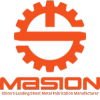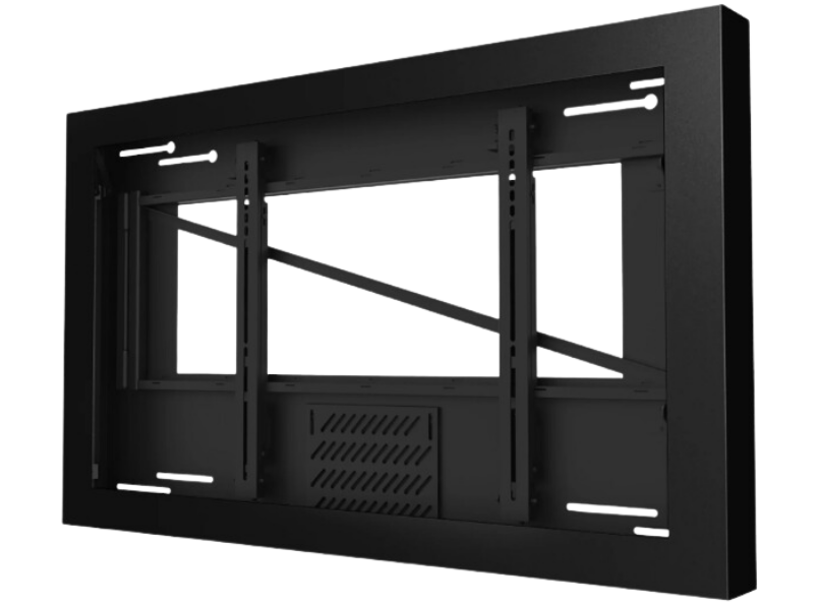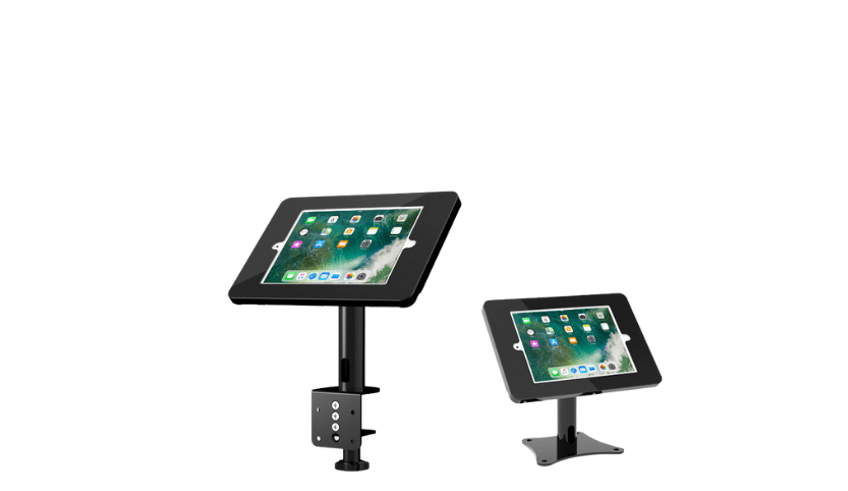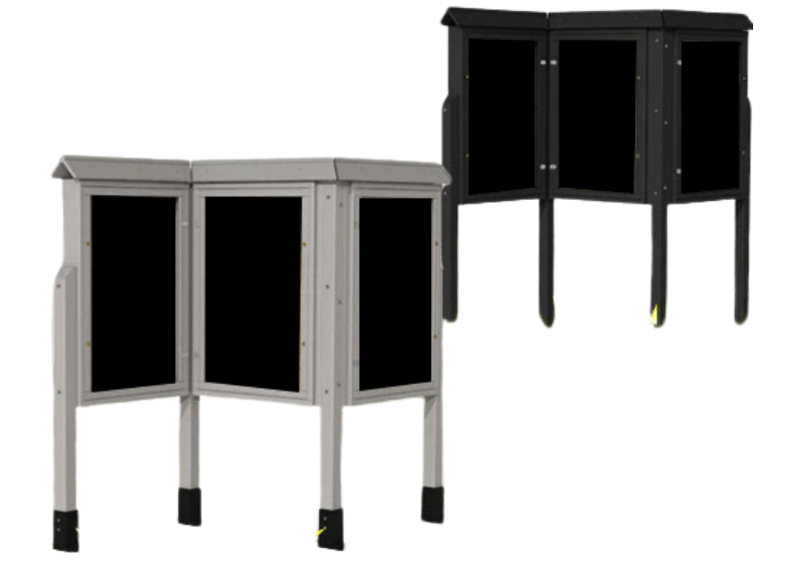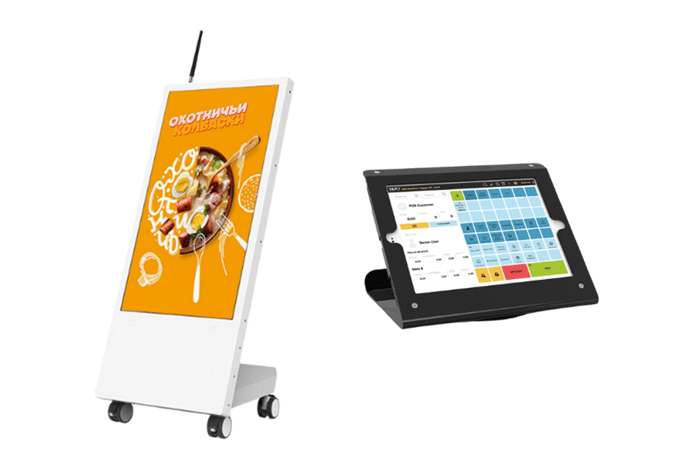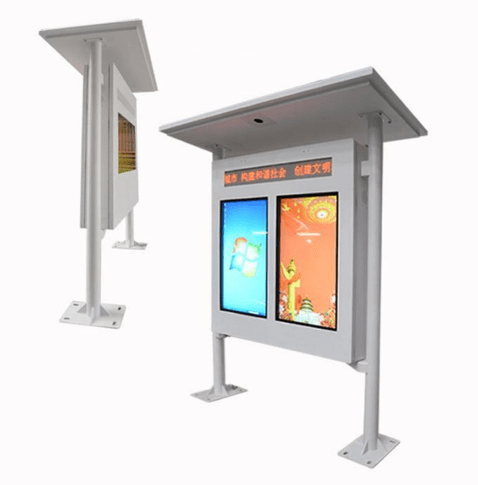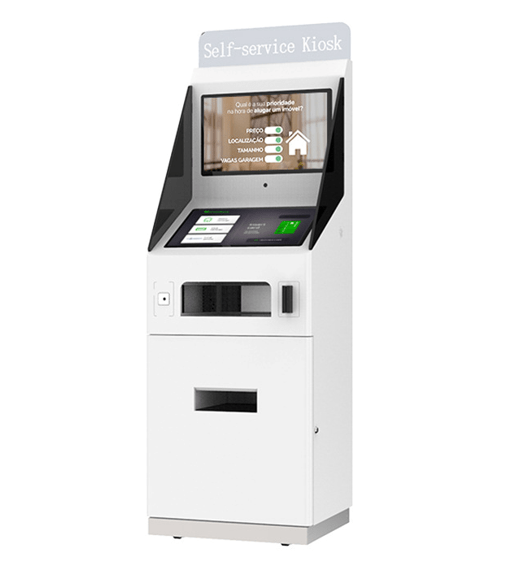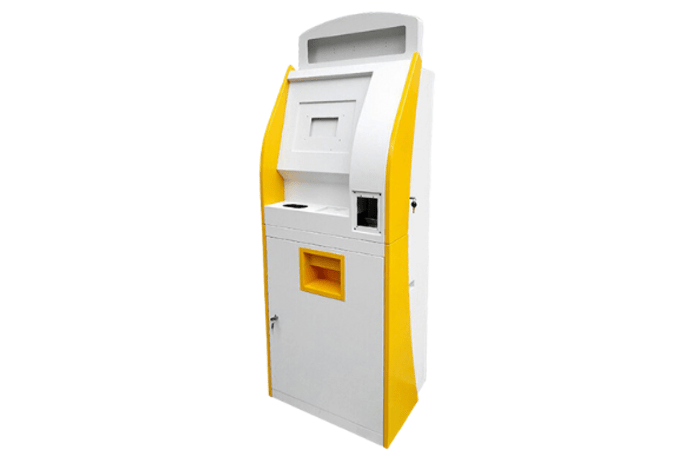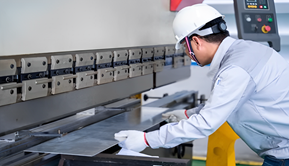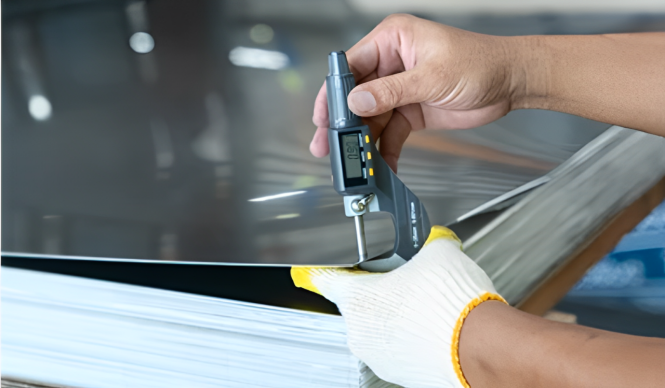Decoding Kiosk Enclosure – Unveiling Every Single Fact
Going through the maze of Kiosk Enclosure can be quite intimidating and stressful. Being confronted with a plethora of choices, materials, and architectural design might be a complex task. You could have encountered difficulties in finding a suitable solution that would resonate with your brand image. Or there is a lack of clarity on which features are required in the application.
Table of Contents
ToggleInvesting in the wrong enclosure without proper advice means losing the time and money, making the whole process a waste of time. But fear not! This comprehensive manual will answer all your questions about kiosk enclosures. As a consequence, you will be able to make wise choices. Unveil insights on key types, components, manufacturing processes, considerations, and much more. Let’s get started!
Understanding Kiosk Enclosure
A kiosk enclosure is a protective housing meant to house and protect interactive kiosk systems. This includes touchscreen displays, payment terminals, and information kiosks.
Enclosures perform a variety of functions. The key ones include shielding of kiosk components from climatic conditions such as humidity, dust, and physical damage. It also enables steady functionalities in different environments.
The kiosk enclosures come in different forms, sizes and materials. Each suits for various applications.
Enclosures often have openings or interfaces for user interaction, which can be touchscreen displays, keypads, or card readers.
On the other hand, they may incorporate supplementary elements such as safety locks and cooling systems. Or even branding features to boost functionality and look.
Overall, kiosk enclosures are very important for extending the life span, functionality, and improving the security of interactive kiosks.
Key Types of Kiosk Enclosure
Thru-Wall Kiosk Enclosure
Thru-wall kiosk enclosures are built into a wall or a partition, which, in turn, corresponds with their surroundings. Generally, manufacturers use tough materials like steel or aluminium to make this enclosure. You can install a Thru-Wall enclosure both indoors and outdoors. Common applications of these kiosks are in places like banks, airports, and stores- where space optimisation is required.
Advantages:
- Saves space, perfect for places that have a shortage of floor space.
- Provide a sleek and integrated look that accentuates the appearance of your space.
- Offers complete stability and is resistant to vandalism or stealing.
Limitations:
- Installation may necessitate structural adjustments to accommodate the enclosure, which may, in turn, increase project costs.
- The fixed nature of the installation limits its portability as it is not easy to de-install and re-install.
Free Standing Kiosk Enclosure
Kiosk enclosures that do not require attachment to a wall or surface are called free-standing kiosk enclosures. Often, the manufacturer builds the enclosures using durable materials such as stainless steel, aluminium, and fibreglass. These materials make them adaptable for use in both indoor and outdoor settings, such as malls, parks and event centres.
Advantages:
- Provides versatility in placement, enabling installation in high-traffic areas for optimum visibility.
- Readily installable and relocatable, it is perfectly suited for temporary activations or pop-up events.
- Compatible with a broad range of interactive equipment, such as touchscreens and payment terminals.
Limitations:
- Requires a stable base or anchoring system to avoid toppling or shifting under high wind conditions.
- May fail to impart the same level of integration of thru-wall enclosures. This would eventually lead to the degradation of the design aesthetic of the environment in some cases.
Table/Countertop Kiosk Enclosure
Small kiosks that can be placed on existing surfaces like tables, countertops, or reception desks are called countertop kiosk enclosures. Frequently, these structures are constructed of lightweight but resilient materials such as plastic or acrylic. They can be used in hospitality, restaurants and reception areas.
Advantages:
- It is space-saving and can fit well into the current arrangement of the furniture.
- Cost-effective method of installing interactive kiosks without much construction or installation involved.
- Provides a user-friendly and convenient communication and engagement channel.
Limitations:
- Restricted in size and may not be able to host larger screens as well as other external equipment.
- May get damaged or stolen easily if you do not anchor or secure them in areas with high human activities.
In-Ground Kiosk Enclosure
In-ground enclosures for kiosks recede into the ground, making them a low-profile and unobtrusive option. They are suitable for outdoor installations like parks, sidewalks or public squares. Manufacturers construct these enclosures from durable materials like concrete or stainless steel. These enclosures can easily withstand extreme weather conditions and heavy traffic.
Advantages:
- Create a smooth and continuous appearance, which reduces visual disturbance in the exteriors.
- Enables high durability and anti-vandalism capabilities.
- Provides access to maintenance and service without disrupting the surrounding environment.
Limitations:
- Involves excavation and groundwork, which might be time-consuming and costly.
- Unable to relocate once it is set up. Hence, it is mainly appropriate for permanent installations rather than temporary events or activations.
Portable/Movable Kiosk Enclosure
You can easily put this kiosk anywhere you want. It comprises of light materials like aluminium or fibreglass, and you can quickly set it up in different locations because of its higher portability. Common applications include trade shows and events or pop-up retail stores to promote your visibility and engage with customers.
Advantages:
- The portable kiosk enclosure features high-level portability and flexibility.
- Installing the kiosk in areas with high traffic volume will guarantee effective promotion of your products and services.
- The lightweight construction feature makes the transportation stress-free, thereby saving you time and effort.
Limitations:
- Portable enclosures may bypass the long-term use of fixed alternatives. Such materials might not be resistant to bad weather or heavy usage for a long time.
- In addition, their mobility could limit customisation choices. This is because some features might have to be simplified to make them portable.
Outdoor Kiosk Enclosure
An outdoor kiosk enclosure built with materials like stainless steel, aluminium, or mold-resistant plastics. These materials are able to withstand different weather conditions. You may place them in parks, on sidewalks, or in any outdoor location.
Advantages:
- One advantage of an outdoor kiosk enclosure is its durability in terms of resistance to outdoor elements.
- It can effectively cope with rain, heat exposure, and temperature changes, maintaining its functioning under all weather conditions.
- Outdoor kiosks can reach a wide range of individuals/audiences. Hence, it enables convenience and accessibility, for example, in high-traffic areas.
Limitations:
- You need to follow frequent maintenance due to weather factors that may cause damage.
- Long-term exposure to sun and moisture will cause the parts to wear out faster, and periodic checks and repairs will be required.
- Outdoor kiosks may face security challenges. This includes robust locking mechanisms and monitoring systems to prevent vandalism or theft.
Indoor Kiosk Enclosure
Indoor kiosk enclosures are commonly used in controlled indoor environments, such as malls, airports, and retail stores. They feature many construction materials, including tempered glass, acrylic, or aluminium, which emphasise aesthetics and functionality. They can hold interactive displays, payment terminals, or information kiosks, leading to an increase in customer experience and engagement.
Advantages:
- Indoor kiosks have a clean and professional look, which blends perfectly in indoor settings.
- They centralise info or transactions in one place, thus improving efficiency and customer satisfaction.
- Indoor venues are also safer and offer complete protection from external factors, allowing businesses to run uninterruptedly.
Limitations:
- Indoor enclosures are more limited in the amount of exposure compared to outdoor or portable kiosks.
- Some indoor environments will present dilemmas such as small space or layout constraints. This causes the planning to be specific when installing and deploying.
Custom Kiosk Enclosure
A custom kiosk enclosure offers you with a personalised design and functionality. Composed from different materials as per your taste and requirements. Custom-built kiosks may include some unusual characteristics or branding signs, whether you want a stylish and modern design or a rough and industrial look. The custom enclosures can achieve the look and feel you envision.
Advantages:
- A custom kiosk enclosure matches your own brand identity and objectives.
- You have the freedom to determine the materials to use and what features to incorporate. Thereby delivering a match between your brand’s personality and values.
- Customized enclosures may increase space utilisation and functionality, positively impacting users’ life experiences and engagement.
Limitations:
- Customization gives rise to additional intricacy and cost.
- Custom kiosk enclosures might need more time to manufacture
Components That Makeup Kiosk Enclosure
Frame
The frame represents the structure of your kiosk enclosure, which serves both structural support and stability. It is the framework that supports the mounting of other parts. The frame ensures that the kiosk remains rigid and stable even in high-traffic areas. You should select a material like steel or aluminium to ensure the longevity of the kiosk and protect it from damage.
Panels
The panels enclose the frame, thus forming the walls of an outdoor kiosk enclosure. They offer shielding from natural factors like dirt, water, and alteration by third parties. Layers can be made from various materials, including tempered glass, acrylic or polycarbonate. You can even tweak the levels of transparency and durability. By selecting the appropriate screen panels, you will be able to make your kiosk not only beautiful and professional but also harm-proof.
Doors and locks
Doors and locks guarantee access to the inside of your outdoor enclosure. They allow authorised personnel to work on maintenance and service and prevent unauthorised individuals from tampering. By using good locks and hinges in the design, you can not only prevent theft and vandalism but also keep your kiosk and its precious assets secure.
Display
The display is the main attraction of your kiosk enclosure. It forms the interface through which people interact with your content or services. A good display can increase user interaction and also improve the kiosk’s ease of use, making it more effective as a communication or transactional tool.
Cable management
Cable management ensures that wiring and connections inside the kiosk enclosure are orderly. It ensures that the cables do not get tangled or damaged, eliminating the risk of electrical failure or harm. Installing good cable management systems like cable trays, clips, and grommets simplifies the maintenance and repair process, leading to reduced downtime and improved performance.
Lighting (Optional)
Lighting improves the visibility and attracts attention to your kiosk shelter. This is true for the environments where it is dimly lit or during the night run. It may comprise ambient illumination, backlighting, or LED stripes. You can specifically install them to showcase feature areas or signage. Through the use of lighting, you can have a creative and compelling display that makes anyone curious about your brand.
Ventialtilation for Effective Cooling
Proper ventilation is critical because it ensures a regular flow of air within your kiosk enclosure. This eventually prevents it from overheating and, thus, prolonging the life of electronic components. You can incorporate fans, vents, or air ducts within the Kiosk enclosure that dissipate heat through an interactive kiosk. Proper ventilation helps to prevent performance problems and to avert equipment breakdowns.
How to Make Kiosk Enclosure – Step By Step
Design Phase:
In the design phase you will draw the dimensions, layout and features of the enclosure. Take into account the purpose of the kiosk, its component size, and any branding or design ideas you may have.
Material Procurement:
After you have chosen the design, the material is the next thing that you should gather. You’ll generally require sheet metal, hinges, locks and other hardware for this. Ensure that your supplies are of high quality and appropriate for the setting. Consider where you are going to install the Kiosk indoor and outdoor. Select material accordingly.
Sheet Metal Cutting:
Applying the accurate measurements from your design, cut the sheet metal panels to size. A plasma cutter, a laser cutter or a water jet cutter can serve the purpose depending on the material thickness.
Sheet Metal Bending:
Following the cutting of the panels, they need to be bent into shape. Use a metal sheet brake or a press brake to form the needed bends and angles based on your design specs.
Sheet Metal Welding:
If your design needs to join several panels with each other, you may require welding. A secure bond can be attained through using MIG or TIG welding that will ensure structural integrity.
Riveting:
In areas where welding is not done or it is not an option, riveting can be used to join metal parts. Add rivets along the seams for more reinforcement and stability.
Assembly:
Put together the different components of the enclosure like the panels, door, locks, hinges, and any electronic or mechanical system. Make sure everything you make fits in and is perfect.
Surface Finish:
After all the components have been mounted, the coating goes on the enclosure for corrosion resistance and esthetic improvements. Paintings, powder coating and anodizing are some of the options available to you depending on your taste and your budget.
Quality control for Kiosk Enclosure
Functionality Testing:
- Make sure that all the components of kiosk enclosure such as the doors, hinges, locks and access panels are functioning well.
- Test the opening and closing mechanisms so that they run smoothly without jamming or sticking.
- Make sure that doors and panels are well organized properly for internal parts and good fit.
Durability Assessment:
- Conduct building strength and stability checks to ensure there is sufficient strength and stability of the enclosure.
- Simulate for the whole enclosure level different external forces such as impacts or pressure at points. Demonstrate this ability in reality with a stressful situation.
- Inspect the welds, rivets, or fasteners if they can ensure a tight fit or strong resistance to loosening over time.
Material Inspection:
- Inspect the surface of the cage for any dents, scratches and damages.
- Inspect for a good paint, powder coating, or hard-coating that will prevent rust and enhance the looks.
- Check the quality of the metal sheet or acrylic or any other material. This has to comply with the set thickness, strength and finish standards.
Electrical and Mechanical Testing:
- Likewise, if the kiosk enclosure is made with computers like displays, touchscreen and internal wiring. Carry out electric checking to make sure that everything is working as planned.
- Make sure the mechanics works by moving parts like fans or motors.
- Make sure that the cables are well-bundled and insulated to avoid electrical hazards and also ensure safe operation.
Environmental Testing:
- Integrate the kiosk enclosure into the real atmospheres of the environment such as temperature, humidity, dust, and vibration. Hence, to experience the impact in the real world.
- Focus on the detrimental effect of moisture, corrosion, UV light and other elements that may abridge the lifespan of the product.
Compliance and Certification:
- It is necessary that the kiosk enclosure is compatible with the current industry standards, rules and certificates such as UL, CE or RoHS.
- Do the measurements or tests that are required for the use in particular applications or environments.
Why Choose a Kiosk Enclosure? (within 300 – 400 words)
Enhanced Security:
Putting it inside the protective case is meant to ensure that the kiosk is safe from stealing, damage, and unauthorized access. With this, you can provide a secure environment for valuable hardware, data security and transaction security.
Improved Durability:
Kiosk enclosures are not sensitive to daily traffic flows, regardless of the type of environment. Made from durable material such as steel or aluminum, they guarantee a long-term protection against physical damage of any kind. Therefore the kiosk will operate for a long time.
Customization Options:
There is an added advantage of custom designing your kiosk enclosures to reflect your brand identity and specific preferences. From color schemes to branding elements, you can personalize the enclosure to build a balanced and visually attractive kiosk experience.
Increased Accessibility:
Accessibility options, like wheelchair-friendly height adjustments, tactile buttons as well as screen tilt capabilities. This allow all users, including those with disabilities to interact with the kiosk easily.
Versatility:
You can configure kiosk enclosures in different applications and environments. Whether in an indoor or outdoor setting, be it in a retail setting, transportation hubs, or healthcare facilities, they offer a flexible solution that can suit your targeted needs.
Weatherproofing:
For open-air kiosk deployments, it provides protection against elements such as rain, snow and prolonged sun. It also retains its regularity and durability even in tough outdoor environments.
Space Optimization:
Enclosures can be useful in space management as they provide a slim and neat housing for your kiosk components. Whether floor-mounted, wall-mounted or freestanding. They help you optimize the space without compromising functionality.
Brand Visibility:
Brand visibility and recognition can be further enhanced through custom branded kiosk enclosures. Through placing your logo, message, and graphics in a prominent position, you can cement brand identity.
Easy Maintenance:
Enclosures enable easier maintenance and servicing of kiosk’s components. With doors/locks, technicians can carry out routine maintenance and solve any problems that may happen.
Cost-Effectiveness:
Investment in kiosk enclosures is a way to save money in the future. Shielding your booth from harm and lengthening its usable life reduces the need for expensive maintenance or replacements. Hence making an enclosure the cost-effective option for your company.
Kiosk Enclosure Price Range for Different Enclosures
The Kiosk enclosure price varies from kiosk to kiosk. It depends on multiple things. The key things which influence the total cost include:
- Material
- Size
- Durability
- Features
- Enclosure Type
The cost range of the different kiosk enclosure for sale are in the table below for your reference:
| Sr. No. | Type Kiosk Enclosure | Kiosk Enclosure Price Range (Estimated) |
| 1 | Free Standing Kiosk Enclosure | $500 up to $10,000+ |
| 2 | Wall Kiosk Enclosure | $200 up to $5,000+ |
| 3 | Outdoor Kiosk Enclosure | $2,000 up to $20,000+ |
| 4 | Indoor Kiosk Enclosure | $300 up to $8,000+ |
| 5 | Portable Kiosk | $400 up to $3,000+ |
| 6 | Counter-Top Kiosk | $100 up to $2,000+ |
| 7 | In-Ground Kiosk | $1,000 up to $15,000+ |
Key Considerables Before Choosing Kiosk Enclosure
Making the right choice for a kiosk enclosure is a critical decision, so you must consider certain factors beforehand.
Application Requirements:
For a start, determine the main objective of your kiosk. Do you reserve it for self-service transactions, information distribution, or interactive experiences? Having a clear idea of what your application needs will drive your choice of an enclosure that provides support for the required functionality and characteristics.
Location and Environment:
Think about where your kiosk will be placed. Is it indoors or outdoors? Will it be subject to severe climate or heavy traffic? Choose an enclosure that resists weather conditions of its site to get maximum output and longer life span.
Size and Space Constraints:
Assess the available space of the kiosk. Remember to take accurate measurements to ensure that it fits into the area that you have chosen without creating any foot traffic obstacles or disrupting the other elements of the environment.
Budget and Cost Considerations:
Design the budget for the kiosk project that includes the cost of the enclosure. Consider the budgetary limits, as well as the need for quality and function in order to get the most out of your investment.
Aesthetic Preferences:
Include the design issue in the enclosure. Determine on the design that will perfectly represent your brand and help improve the looks of the site where the kiosk will be located.
Accessibility Needs:
See to it that the kiosk enclosure is user-friendly for people with disabilities and for all users in general. Include components like wheelchair availability, adjustable heights, and simple interfaces to match the large variety of user preferences.
Security Requirements:
Carry out an assessment of the security requirements of your kiosk, especially if it will deal with private information or transactions. Look out for locations with already installed safety features comprising lock, tamper-proof hardware, and CCTV to prevent stealing and vandalism.
Durability and Longevity:
Choose a robust and solid fencing that can withstand the frequent use and possible impacts. Choose materials that are weather proof, corrosions proof, and resistant to wear and tear for its long serviceability.
Integration with Existing Systems:
In case your kiosk is able to integrate with your existing systems or technologies you should make sure that the enclosure is compatible. Check things like cable management, mounting, and access points to make sure that the process is smooth and that integration is not a problem.
Best In Class Kiosk Enclosure Manufacturer for Qualitative and Durable Enclosures
Choosing Masion as your kiosk enclosure manufacturer guarantees premium quality and long-lasting products. With 17 years of experience in precision metal stamping under its belt in China, Masion offers the unequaled know-how. They have a vertical integration across 6 manufacturing plants that effectively allows smooth production and quality control.
Masion is the expert in manufacturing precision stamping parts and assemblies, more than 7 million pieces being produced each year. They are very good in integrating the different components with pressed parts so that they work smoothly. The fact that they can make their own dies in-house, including progressive and compound dies, guarantees accurate and speedy production.
Equipped with modern equipment and qualified staff, Maision offer custom made kiosk enclosure just the way you want it. Their CNC automatic stamping presses, robotic welding systems, and smart facilities guarantee precise and accurate production.
Through years of working with the automotive OEM industry, including brands such as LiXiang and Tesla, Masion has established its reputation for reliability. They cover the full scope of needs, including assistance in design and secondary services such as riveting, bending, and laser cutting.
Masion quality assurance is also supported by the receipt of ISO/TS 16949 certification and conformity with industry standards. Through of automation, simulation, and real-time monitoring, their goal is to provide cost-effective solutions without sacrificing the quality.
If you are looking for an unrivaled quality, efficiency, and reliability in kiosk enclosure manufacturing, make your choice and Masion. Customer satisfaction is their top priority and they strive to surpass your expectations by offering unparalleled products to meet your specific requirements.
Conclusion
In a nutshell, you have a deep grasp of kiosk enclosure now. You’ve been taught why they are necessary for protecting the equipment and helping out the user feel much better. Through proper selection of materials and features you will be able to take care of durability and functionality. Now, use this knowledge to develop efficient and reliable kiosks that will meet your requirements.
